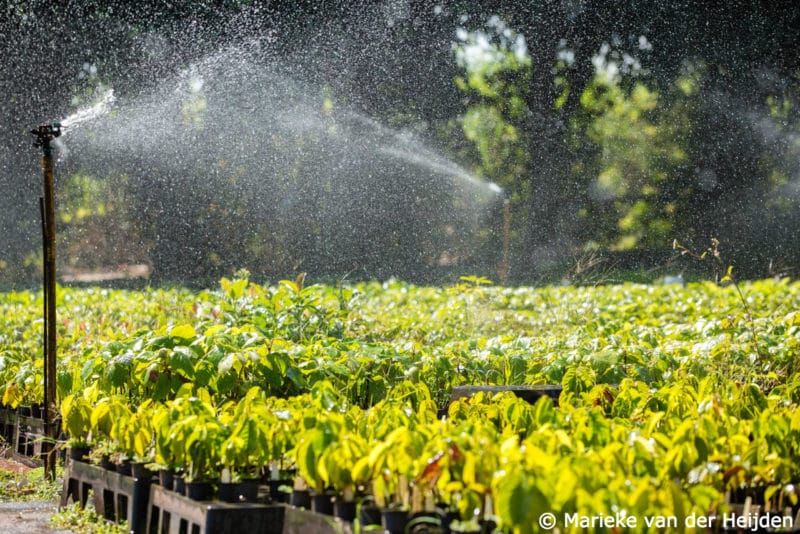Reforestation is a generic term for replanting trees in a specific area with various goals, including (ecological) restoration. The restoration concept relates to a more complex and essential process that “assists the recovery of an ecosystem that has been degraded, damaged or destroyed” (SER, Society for Ecological Restoration).
Ecological restoration and reforestation are terms that we use often, which can sometimes be understood to mean the same thing. In the video below, Dimitrio Schievenin (BJF Project Coordinator), explains the difference between both terms and why this is so important!
In the case of a forest, we can say that planting trees or seeds is the fundamental step to bring a degraded area closer to its original state. A newly planted forest creates the ideal conditions that both prevent invasive species from taking over and encourage a diverse set of species to flourish in a degraded area, allowing the rebirth of ecosystem dynamics and services.
Therefore, conceptually speaking, it is correct to assume that the BJF, along with its technical partners, is developing a reforestation endeavour with ecological restoration purposes along the Araguaia Biodiversity Corridor, by planting the correct mix of indigenous trees and accelerate nature’s process of regeneration. Nevertheless, it is more complex than this, so keep reading for a better understanding of both terms!
ECOLOGICAL RESTORATION VS REFORESTATION
Reforestation involves bringing back any forest that has been degraded. Nevertheless, this can be done without considering species composition or the functionality of the ecosystem. We could, for instance, reforest a region using only one species of tree, and would not have to try and restore the biome to what it once was.
Ecological restoration goes beyond this – accounting for the conservation of biodiversity, species composition, and the restoration of the degraded ecosystem to its original conditions as much as possible. The goal is to bring back the fauna and flora living in the region by bringing back their ways of sustaining themselves.
Therefore, even though it is possible to carry our ecological restoration through reforestation, reforestation does not have to encompass all the steps needed for ecological restoration.
ECOLOGICAL RESTORATION FOR ALL BIOMES AND ECOSYSTEMS
Another important aspect to consider is that ecological restoration also involves restoring non-forest ecosystems – including savannas and grasslands. At the Black Jaguar Foundation, for example, we work with the restoration of the Amazon rainforest and the Cerrado, which is known for being the savanna with the greatest biodiversity in the world.
Ecological restoration is a lot more than planting trees. To conduct it, one needs in-depth knowledge of the biome’s native tree species, to enable a favourable environment for biodiversity to return.
ECOLOGICAL RESTORATION AND THE IMPORTANCE OF NATURAL REGENERATION AND BIODIVERSITY
Seeing the natural regeneration of native species and return of animals to our restoration sites is one of the best signs that our ecological restoration efforts are working.
It shows that we are restoring the conditions needed for life to exist in harmony in their natural habitat. Watch the vídeo below where our Field Coordinator, Carlos Eduardo Oliveira, further explains this restoration technique!
To carry out our ecological restoration activities efficiently and thoroughly, we developed the BJF Restoration Cycle, which consists of 17 different steps!
Your support has been crucial in all of this. Would you like to know more about how you can support the Araguaia Biodiversity Corridor?





